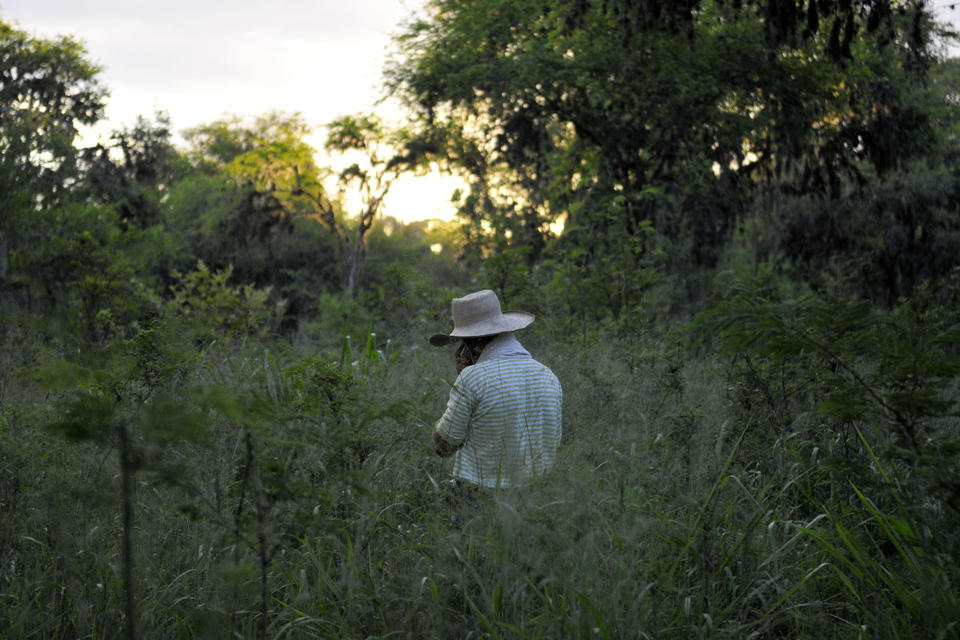New analysis finds pandemic didn’t dampen deforestation
- From
-
Published on
28.11.22
- Impact Area

Despite the massive upheavals in the first year of the COVID-19 pandemic, deforestation globally proceeded more or less as expected from the trends established over the last 15 years, according to a recent study from researchers at the Alliance of Bioversity International and CIAT.
In the paper “Has global deforestation accelerated due to the COVID-19 pandemic?” published in mid-November 2022, the researchers used historical deforestation data (2004–2019) from the Terra-i pantropical land cover change monitoring system to project expected deforestation trends for 2020.
Analysis of tree cover loss over time was used to determine whether deforestation observed in 2020 deviated from expected trajectories after the first COVID-19 cases were reported; both at the regional level for the Americas, Africa and Asia and at the country level for Brazil, Colombia, Peru, the Democratic Republic of the Congo and Indonesia.
“It was not particularly surprising to see little change,” says Janelle Sylvester, who is the corresponding author of the study and a Research Fellow at the Alliance.
She said that deforestation rates likely did not drastically change for many reasons. For one, it is probable that the complex dynamics driving deforestation before the pandemic persisted unimpacted by the lockdowns.
“For example, illegal deforestation in areas where there was minimal state (governmental) presence before the pandemic would likely continue during lockdowns,” she said.
Moreover, she explained that “global-level macroeconomic forces related to changes in demand and supply paired with national economic stimulus packages could have balanced out economic pressures that were being placed on forests.”
Louis Reymondin, who co-leads the Digital transformation of the agri-food systems research theme for the Alliance of Bioversity International and CIAT also said that the finding wasn’t surprising, given that deforestation is heavily driven by livestock grazing and that demand for those products continued during the lockdowns in 2020.
“There were changes in food consumption habits, but usually it was towards processed foods and a reliance on industrialized agriculture,” he said, “The disruption needed to stop deforestation is about changing consumer behavior, changing the food system… and that’s something that countries and governments and scientists are trying to push forward.”
Jonnathan Céspedes, the lead author of the study, a CIAT research assistant during the study and now a 2nd year Phd Student at Institut Polytechnique de Paris says that his task was to evaluate deforestation and COVID-19 data in order to determine possible relationships between both variables.
“It is key to take into account that the spatial scale of this study is global; therefore, the next stage is to evaluate sub-national and local scales, where probably the results may be different,” Céspedes said.
Sylvester said that to get a genuine snapshot of the impact, more research would be required, as national economic recovery efforts in response to the pandemic may have longer-term effects on deforestation that are not captured in this study limited to 2020.
“All in all we see that deforestation trends in most countries followed their expected trajectories; however, to really understand the effects of the pandemic on deforestation we will have to look at a longer time period, say three years or more, in order to understand how national economic recovery efforts impact forest cover,” Sylvester said.
Related news
-

Harnessing digital tools in securing soil health for Africa’s food future
Sehlule Muzata27.06.25-
Climate adaptation & mitigation
-
Environmental health
-
Nutrition, health & food security
-
Poverty reduction, livelihoods & jobs
Nairobi, 27 June 2025 (IITA) - As it marks its first anniversary, the Regional Hub…
Read more -
-

Harnessing digital tools in securing soil health for Africa’s food future
Sustainable Farming Science Program27.06.25-
Climate adaptation & mitigation
-
Environmental health
-
Food security
-
Poverty reduction, livelihoods & jobs
Nairobi, 27 June 2025 (IITA) - As it marks its first anniversary, the Regional Hub…
Read more -
-

Beyond tools, toward transformation: ACAT 2025 presses for collaborations
The Alliance of Bioversity International and the International Center for Tropical Agriculture (CIAT)24.06.25-
Climate adaptation & mitigation
-
Environmental health & biodiversity
Over 800 delegates gathered in Kigali Rwanda for ACAT 2025 to explore agri-tech solutions for…
Read more -
